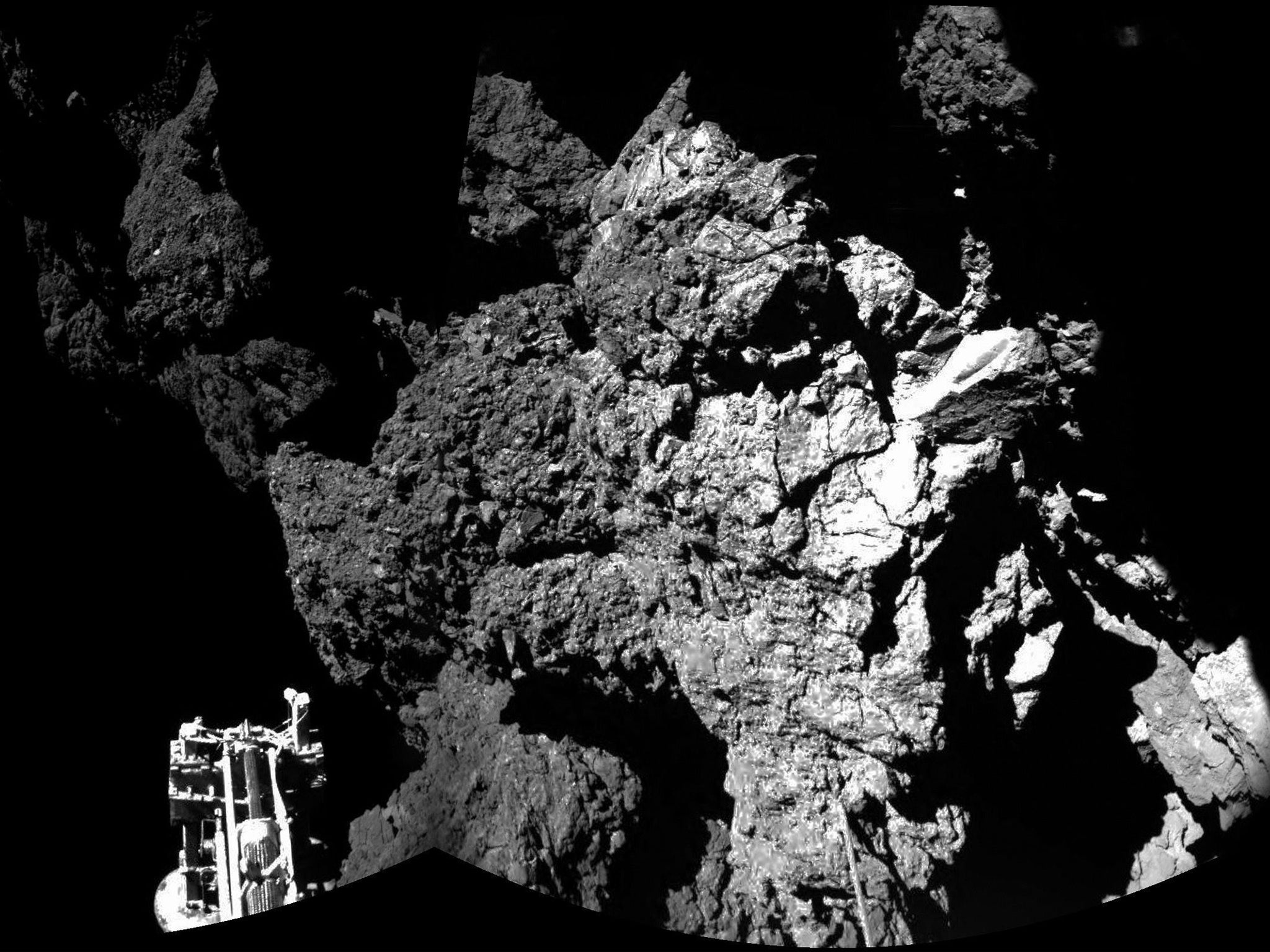Rosetta mission: Philae lander powers down on comet 67P after running out of power
Scientists had succeeded in lifting the Philae lander and rotating it through 35 degrees in an attempt to maximise the amount of sunlight

Your support helps us to tell the story
From reproductive rights to climate change to Big Tech, The Independent is on the ground when the story is developing. Whether it's investigating the financials of Elon Musk's pro-Trump PAC or producing our latest documentary, 'The A Word', which shines a light on the American women fighting for reproductive rights, we know how important it is to parse out the facts from the messaging.
At such a critical moment in US history, we need reporters on the ground. Your donation allows us to keep sending journalists to speak to both sides of the story.
The Independent is trusted by Americans across the entire political spectrum. And unlike many other quality news outlets, we choose not to lock Americans out of our reporting and analysis with paywalls. We believe quality journalism should be available to everyone, paid for by those who can afford it.
Your support makes all the difference.The Philae lander on the distant comet 67P has run out of power despite attempts by scientists to rotate the craft into a better position to charge its batteries.
Scientists said they had succeeded in lifting the Philae lander and rotating it through 35 degrees in an attempt to maximise the amount of sunlight getting to its solar panels and extend the duration of its mission on comet 67P/Churyumov-Gerasimenko.
However, moments after announcing the success of the manoeuvre, the European Space Agency (ESA) Rosetta mission control announced that the lander appeared to be fast running out of power.
The Philae mission later tweeted: 'I'm feeling a bit tired, did you get all my data? I might take a nap'
After bouncing twice on landing on Wednesday, the fridge-size lander was left standing on two of its three legs, with its solar panels sitting in the shadow of a nearby cliff face which formed the edge of a large crater.
As a result, the solar panels were receiving only about 1.5 hours of sunlight, instead of the expected six or seven – raising fears that the lander would lose power after about 64 hours when the primary batteries ran out.
Late on Friday night, European Space Agency (ESA) scientists tweeted that they had successfully lifted the lander slightly and rotated it through 35 degrees.
In a series of tweets written as if coming from the Philae lander itself they said: “I just started lifting myself up a little and will now rotate to try and optimize the solar power.
“Also my rotation was successful (35 degrees). Looks like a whole new comet from this angle.”
The aim of the manoeuvre was to expose one of Philae’s larger solar panels to the small amount of sunlight falling on the lander.
Before the operation began ESA's senior science advisor Mark McCaughrean, said: "The rotation of the lander's body could result in more power if one of the larger solar panels can catch the illumination that is falling on the smaller. All things being equal, the same amount of sunlight falling on a larger panel should result in more power being generated."
But it was not immediately clear how much – if any – extra solar power the lander was receiving as a result of the lift and turn operation, and how much good it had done.
Minutes after announcing that the manoeuvre had been completed, the ESA scientists tweeted, in the guise of the lander: “I'm running out of energy quite fast now. My battery voltage is approaching the limit soon now.”
The scientists also pointed out that the lander had been on the comet for 56 hours – bringing it close to the anticipated 64-hour limit of its primary batteries.
If Wednesday’s landing had been perfect and Philae’s solar panels had been exposed to the maximum amount of sunlight, it would have been able to collect and transmit data until next March.
By then the comet would have been so close to the sun and its surface have become so hot that the lander’s instruments would have become incapable of functioning.
The ESA’s Rosetta mission is the first to have successfully orbited a comet and landed a probe on its surface.
It took 10 years since its launch in 2004 for the Rosetta orbiter to travel to comet 67/P, which currently 510m km (311m miles) from Earth in the direction of the constellation Sagittarius.
During its time on the comet, Philae has sent a steady stream of data to mission control in Darmstadt, Germany , and before Friday night’s lift and turn operation, Professor Jean-Pierre Bibring, the mission’s lead landing scientist, had insisted: “Do not have the impression this is a failure. What is really amazing is not the degree of failure but the degree of success. It’s gorgeous where we are.”
Join our commenting forum
Join thought-provoking conversations, follow other Independent readers and see their replies
Comments